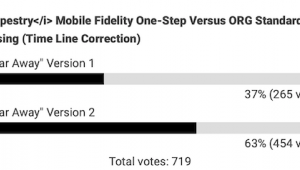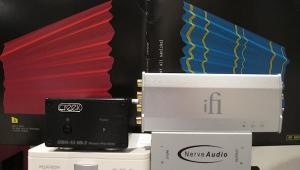Primary tabs
Which "Scheherazade" is the "Better" Record?

Over the past few years a few audiophile/record collectors have played for me records they'd purchased, some at considerable expense, from Tom Port's Better Records, which advertises on this website.
The business model is to scour the world for used records and select the very best sounding for resale at what some would consider to be very high prices that some find outrageous. I don't. Going through dozens or more pressings of a given title to find the very best sounding is a time consuming process. You have to listen all the way through especially if you sell the records with a money back guaranty.
You could do likewise if you have the time, inclination and money but those with money it's easier to let someone else do the work and pay for it. Anyone who's sat down with a stack of say, Crosby, Still & Nash knows pressing quality and sonics are all over the map, with specific lacquer cuts and pressing plants producing the best sound—but not always. So while cynics will say they can buy clean copies all day for a few bucks of CS&N, getting a great sounding copy (beyond just "clean") takes perseverance and a great deal of knowledge. No doubt over the decades Port has been doing this he's gained plenty.
There's no controversy when you hear an "RL" Led Zeppelin II of course. That is most certainly a "better record" and worth whatever it costs to get one in great condition. On the other hand, a friend got a copy from "Better Records" of The Rolling Stones's Let It Bleed on the American London label that cost him plenty. In my opinion there are no good, not to mention better copies of that album on London records, which were all mastered and pressed in America. The only great copies of that one are on the British Decca label (in this case Londons and Deccas are way different!).
That said, though I believe the company's term "Hot Stamper" is a marketing ploy (like "Living Stereo", or "Living Presence") most of the "Better Records" records that I've heard have been sonically superior for whatever reason or reasons so it's no mystery the company has thrived and prospered over the decades its been in business even though, as some of you may know, Mr. Port and I have not always seen (6) "eye to eye" on everything.
After Analogplanet's enthusiastic review of Analogue Productions' Scheherazade (LSC-2446) "Living Stereo" reissue, Better Records contacted us with an offer and a challenge: they would send us a nearly top rated original "Hot Stamper" pressing for us to compare with the reissue.
The copy that arrived (some time ago, I'm sorry to admit), pressed at RCA's Indianapolis plant had an "N/A" rating for side one (lacquer 14S) and an A++/A+++ rating for side two. The problem with side one was immediately obvious before I even played it: visible "strings of pearls" throughout "The Story of the Kalendar Prince" indicating "non-fill" issues. Top rated side two (12S, first mother, first stamper [A1]) looked and sounded as advertised.
However, rather than me comparing the two records, why don't you do it? So here are two 90 second excerpts from side two. Admittedly a longer sample would be more useful but I think the excerpted section is sufficiently useful. The turntable was the Continuum Caliburn with Cobra arm. The cartridge was the .2mV Transfiguration Proteus—which is not a warm and soft sounding cartridge and the phono preamp was the Ypsilon VPS-100 with the MC16L step-up transformer. A/D conversion was via the Ayre QA9 at 96/24 resolution.
The cuts are not at the same level and I chose to not manipulate the files in any way to level-match so adjust as necessary. Vote for which you prefer and then comment as to why and which you think is which.
One thing I can tell you for sure: the reissue jacket is far superior to the original since Analogue Productions went to the trouble of getting the original artwork including a spectacular image of Fritz Reiner. But the sound? You decide!






















































